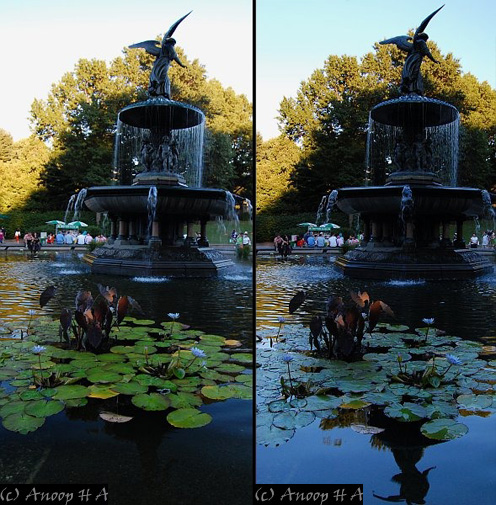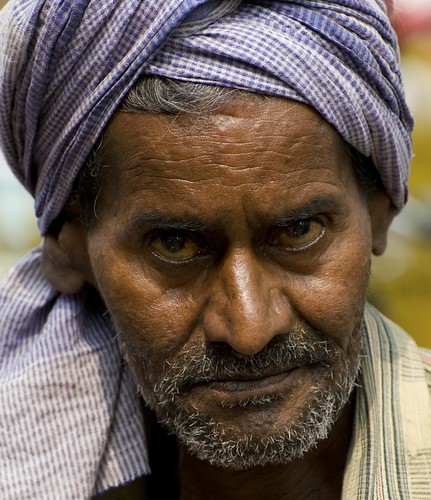Travel Photography: Circular Polarizer
This week’s Travel Photography article is written by Anoop. Anoop blogs about his experiments in photography on Me and My Camera Obscura. I am a fan of his images of birds in action in Mysore’s Karanji Kere. Today’s article is about a filter commonly used along with SLR cameras – Circular Polarizer. Circular Polarizers can help enhance outdoor images taken in sunny days and are also useful in eliminating reflections.
As always, the second part of this article has weekly image reviews. If you would like to have your images reviewed to know what worked well and how it could have been improved, choose some of your best images and post them on group pool of India Travel and Photography. Don’t forget to tag them as itpcritique, so they can be chosen for review. You can also post your questions related to photography as a comment to this post, or in India Travel and Photography group discussion. I will answer them in next week’s article.
CIRCULAR POLARIZER by Anoop
‘Circular Polarizer is a must for daylight outdoor photography’ – this is probably the only line I would write if I had to write just one line about them!
Circular Polarizers are filters mainly used in photographic situations involving reflections. These filters consist of two rings. The inner ring screws on to the front thread of a lens and the outer ring is freely rotatable.
Though I have my circular polarizer always screwed onto my 18-55mm lens, there are circumstances where I have had to use my camera without them. In such cases the thumb rule I follow is ‘If there is enough light for shooting photos without bothering about camera shake, leave the polarizer on the lens.’

Photo taken at Central Park New York City
Both the above photos are taken with a Circular Polarizer on, and are good examples for the two different extremes of polarization. The only change between the two images is the alignment of the circular polarizer.
The photo on the left almost completely eliminates reflections from the horizontal plane (water). Here we can see the increase in contrast of the water lilies, but on the other hand we can observe that the sky is captured as it really appears.
The photo on the right does exactly the opposite, the reflections are left alone and the direct light from the sky is filtered as a result of which we can see a bluer sky.
Both the photos above are taken with the same camera settings and with the Polarizer mounted; the difference was just in the alignment of the filter’s outer ring. Rotating the outer ring controls the plane of polarization and lets in the light selectively.
Mounting the polarizer normally increases the contrast of the photographed object, as it almost always eliminate some percentage of reflections and reduces glare, and hence bringing out true colors of the object. Being so used to shooting with the polarizer on, I would consider it a sacrilege shooting in following conditions.
- photos having a lot of sky
- photos having reflections of water
- bright outdoor photography
There is one limitation I have encountered frequently while using a Polarizer – the Polarizer does reduce the amount of light coming into through the lens. While this is a hindrance in low light scenarios, it’s not a hassle for daylight outdoor photography.
Note from Arun. If you can see the example images, there is some compromise in either of the pictures. While the first one has a dull sky, the second one lacks the contrast and rich colors of the leaves on the water. Circular Polarizer has definitely helped get the best of the situation. But it can be further improved, if one can devote time and has patience to wait for a day with better lighting. Shooting in the morning or evening on a day when the sky is naturally blue would give the best result without any compromises. Patience has a lot of value in photography!
IMAGE REVIEW
The image below is posted for review by LeFlic17
Technically, I can’t find much fault in this image. The image is sharp and in focus. It is exposed properly, and eyes are not in shade as it often happens in outdoor images. It is framed well too, emphasizing the face properly and not having any distractions. But it seems more like a posed shot to me, void of any natural expressions. The man appears conscious of him being photographed. His face is stiff and has lost all the candidness. The picture would have had a lot more life, if some time was given to get him used to the camera, or if the image was made without keeping him aware. For more about this, read the earlier article in the travel photography series: dilemma of asking permission before taking pictures of people.
If you would like to have your images reviewed to know what worked well and how it could have been improved, choose some of your best images, post them on group pool of India Travel and Photography and tag them as itpcritique. Only tagged images are taken for reviewing. You can also post your questions related to photography as a comment to this post or in India Travel and Photography group discussion. I will answer them in next week’s article.
